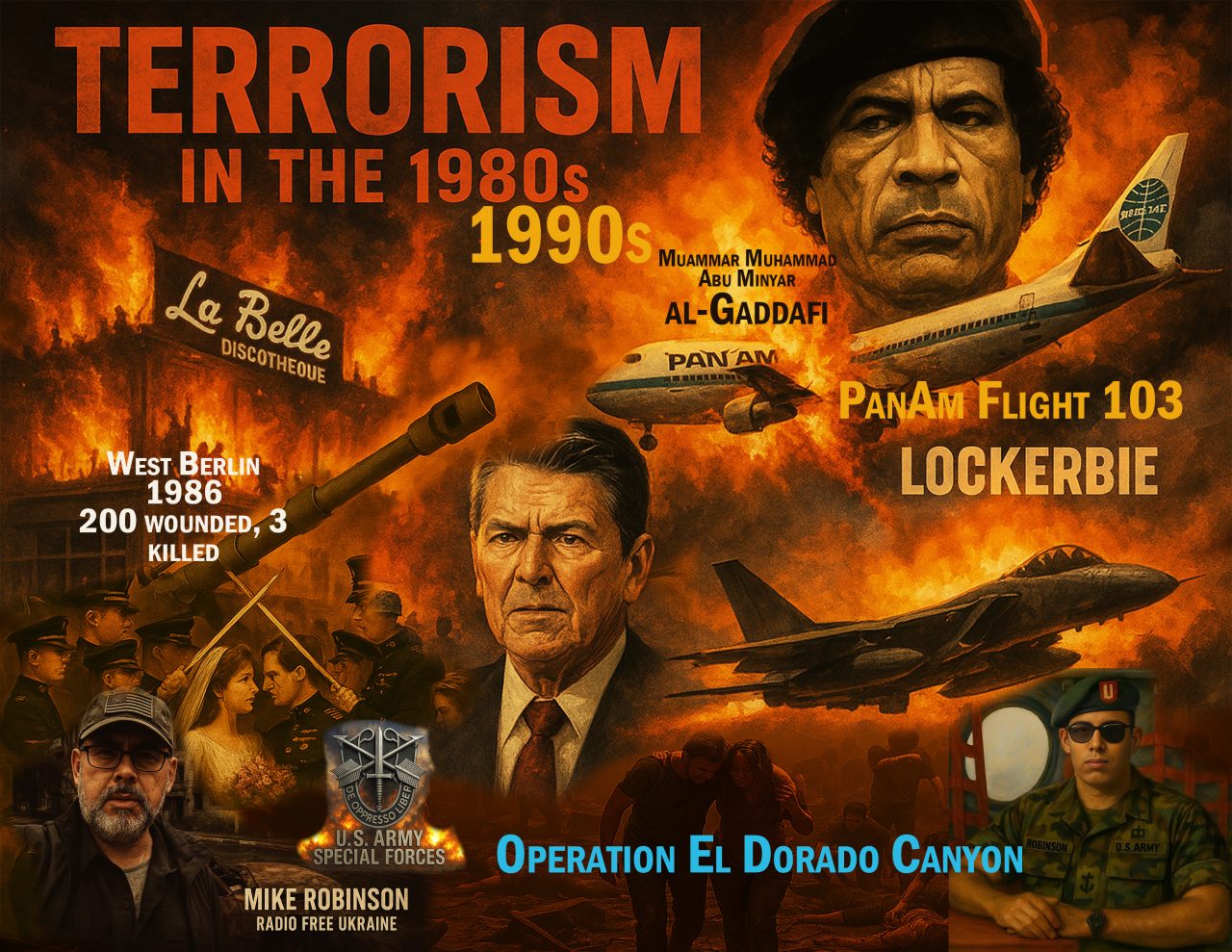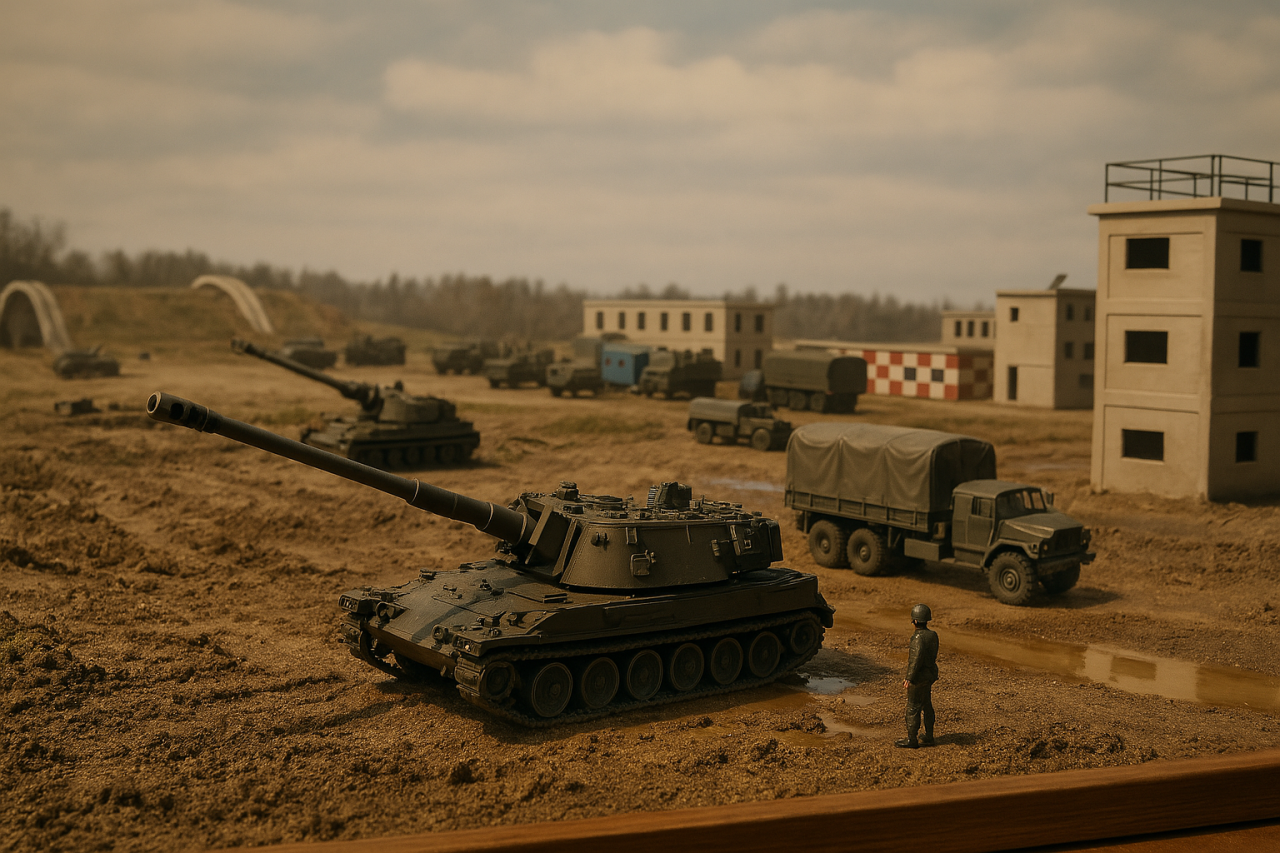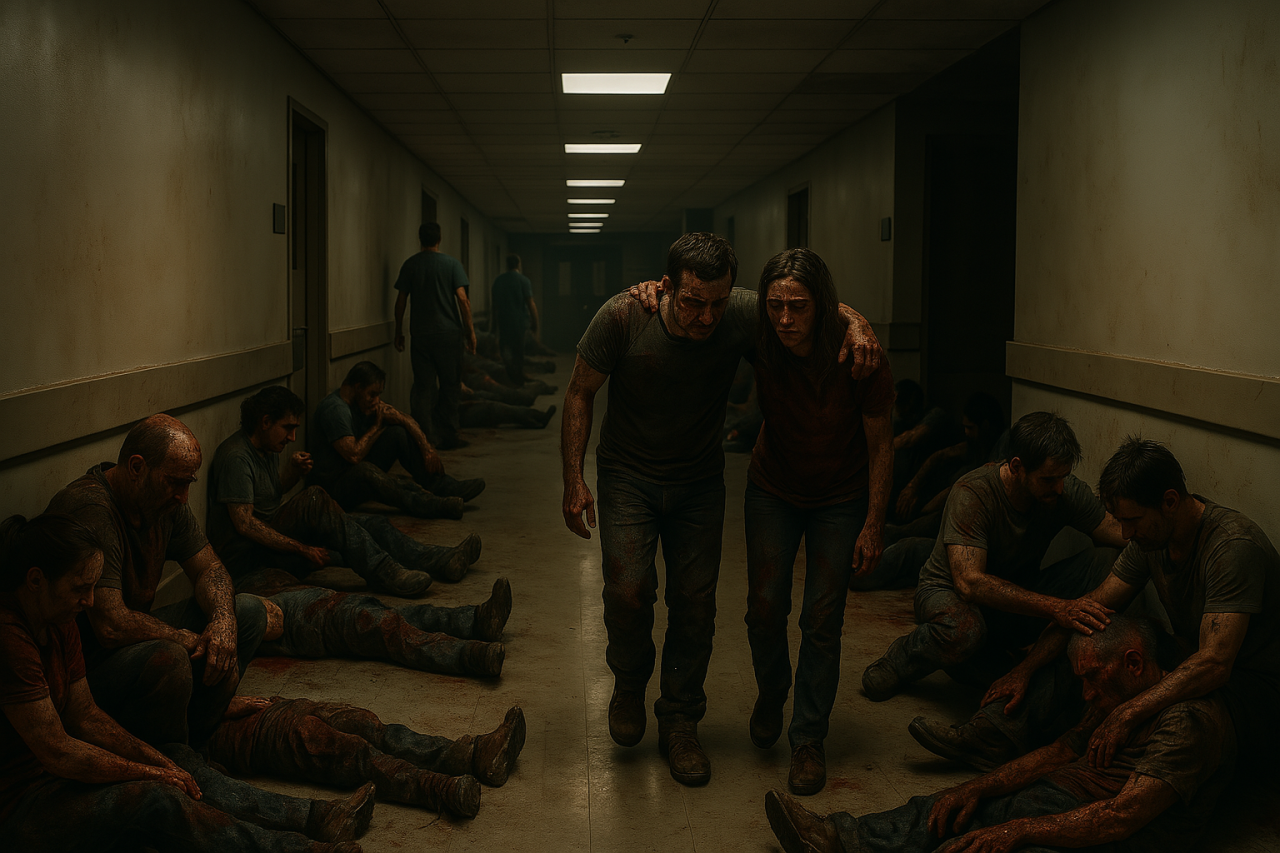By Mike Robinson, Former U.S. Army Special Forces & Counterterrorism Officer

On April 5, 1986, I was a 25-year-old U.S. Army officer stationed TDY in West Berlin with C Battery, 6th Battalion, 14th Field Artillery (Nuclear), 1st Armored Division— (Old Ironsides) We were fresh in from Nuremberg, Germany, having just taken the Freedom Train through East Germany to relieve the Berlin Brigade’s C Battery, 94th Field Artillery, for their training rotation in Grafenwöhr. Our eight M109A3 self-propelled howitzers, certified and equipped when called upon with nuclear-capable rounds, had just rolled through Checkpoint Alpha, Bravo, and Charlie. Our mission was serious, strategic, and symbolically American: hold the line in a divided city in the middle of enemy territory haunted by the Cold War.
That night, the world changed.
At 1:45 a.m. on April 6, a bomb exploded inside the La Belle discothèque—a popular off-duty hangout for U.S. soldiers and young Berliners. The blast tore through the dance floor, instantly killing three and injuring over 200 others. Two of the dead were Americans: Sergeant Kenneth Ford of the Berlin Brigade, and a fellow soldier’s German girlfriend. The attack was no accident. It was terrorism—planned and executed by agents of Libyan dictator Muammar Gaddafi.
About a dozen of my men had been inside the club when the bomb went off. As their acting battery commander, I snapped into autopilot. There was no time to think—only to act. I rushed to the scene and saw carnage that still haunts my memory: blood-slicked sidewalks, twisted steel, and broken glass catching the strobe lights from ambulances.
At the American Hospital, I was the first Army officer with wounded troops to meet the ER doctor. He was triaging Sergeant Ford and his girlfriend when I walked in. I remember the quiet horror in the room—the kind of stillness that follows a scream. After that, we scoured German hospitals across the city, trying to locate and account for our soldiers. My hands moved, my voice gave orders, but my mind was somewhere else—disassociating, processing, burning with questions and anger. By dawn, I had seen more wounded Americans than I ever expected to in peacetime Europe.

That same night, the entire NATO command structure went on high alert. In addition to treating the wounded and tracking the attack, we had a duty to prepare for the unthinkable. We secured our firing points, guarded our howitzers, and double-checked our nuclear command protocols. We were a nuclear artillery unit on standby in the middle of a geopolitical minefield, and no one knew if this was just the beginning.
Nine days later, on April 15, 1986, President Ronald Reagan launched Operation El Dorado Canyon in response to the attack. F-111 fighter bombers flew from the U.K. to strike targets in Tripoli and Benghazi. Gaddafi survived, but the cost was high: one U.S. F-111 was shot down over Libya, killing pilot Captain Fernando Ribas-Dominicci and weapons systems officer Captain Paul Lorence. Their bodies—one recovered and one never returned—became symbols of the price we pay to confront terrorism.
For me, the decision was clear. On April 7, the morning after the bombing, I turned to my German wife, Mary, and told her: “I’m leaving the Cold War behind. I’m going Special Forces.”
Mary was with me that night and has been with me ever since. At the time, she wasn’t even a U.S. citizen—just a brave young woman from Nuremberg who supported my calling to serve. She had already experienced the long shadow of terrorism in Europe, and later would feel its reach again in Latin America. Long before 9/11 made it real for many Americans, it was already shaping our lives.

I was selected for the Infantry Officer Advanced Course at Fort Benning, then completed the grueling Special Forces Officer Qualification Course at Fort Bragg. I joined B Company, 1st Battalion, 7th Special Forces Group (Airborne) as an A-Team Commander on Smoke Bomb Hill. After three years of deployments and unconventional missions, I was selected for the CIF (Commander-in-Chief’s In-Extremis Force)—a counterterrorism unit tasked with the most dangerous hostage rescue and direct action missions.
In 1989, President George H.W. Bush ordered 7th SFG(A) on emergency deployment to Peru. I was fortunate to be selected to go.
The Sendero Luminoso—Shining Path—was not just a Marxist insurgency. They were terrorists, killing civilians to disrupt national elections, bombing towns, and colluding with drug traffickers to destabilize the entire Andean region. I missed my son’s first birthday because I was helping the Peruvian military build the capability to push back. The irony is not lost on me—terrorism took me away from my own family in order to protect someone else’s.
Now, decades later, I watch with a heavy heart as politicians use the term “terrorism” to describe Latino gang crime in the U.S. Let me be absolutely clear: I’ve fought real terrorists—people with ideological, religious, and political motives who weaponize fear to destroy governments and societies. Gangs are a law enforcement problem, not a counterterrorism one. Lumping them together is dishonest, dangerous, and ultimately weakens our real national security posture.
Yes, I respect other cultures. I have lived among Germans, Peruvians, Panamanians, and others who were nothing like me—and yet everything like me, too. I hold no hatred in my heart for religion, ethnicity, or foreign lands. But terrorism? That I cannot and will not excuse.
That night in Berlin changed my life forever. It shaped me into a Special Forces officer. It sent me across the globe to fight for peace. And it taught me that in war—and in truth—clarity matters.
We must know the enemy to defeat it. And we must know ourselves to remain free.